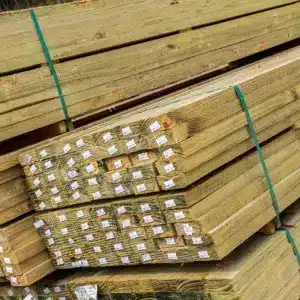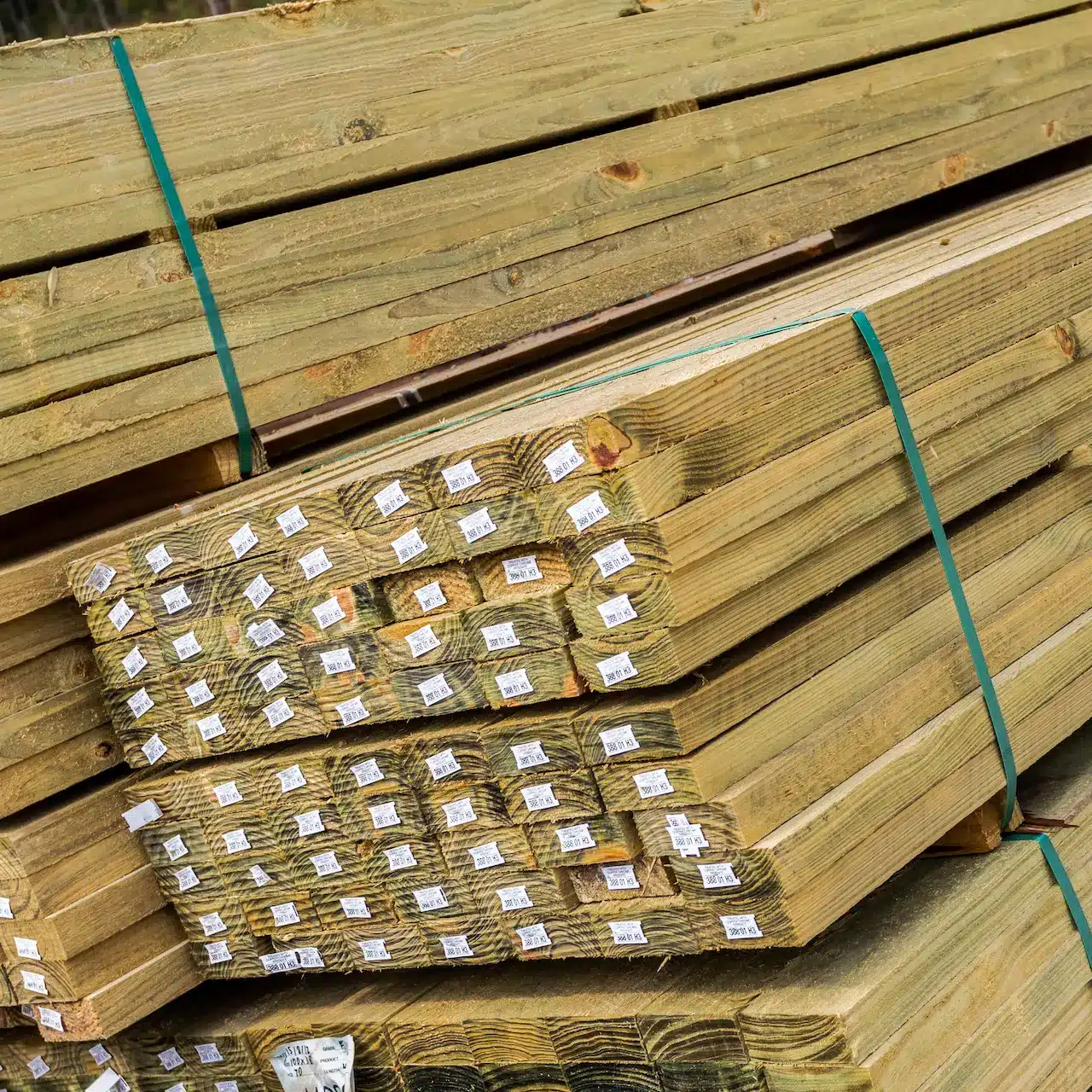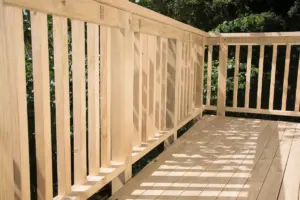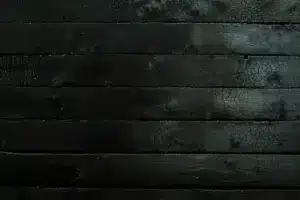What Is CCA Treated Timber or Copper Chrome Arsenic (CCA) Treated Timber?
Copper chrome arsenate (CCA) treated timber is wood that has been treated with a preservative containing copper, chromium, and arsenic. This treatment prolongs the life of the wood, making it resistant to insect and fungal attacks. CCA-treated timber was commonly used in decking, playground equipment, fences, retaining walls, jetties, and vineyards. However, concerns have been raised regarding the potential health risks of CCA-treated timber.
Table of Contents
Toggle
The Preservation Process of Wood
The CCA process, pioneered in 1933, is used worldwide. Copper and arsenic in the preservative protect the wood from insect and fungal attack, while chromium ‘locks’ the copper and arsenic into the timber, reducing the risk of chemicals leaching out. The CCA process gives the treated wood a green tint.
Arsenic Concerns
The main concern with CCA-treated timber and timber sheeting is that it contains arsenic, which can be ingested (swallowed) or inhaled (when CCA-treated timber is burnt). Over time, small amounts of chemicals may leach from CCA-treated timber. However, research has found that the amount of leached arsenic is less than that found in common foods. Since the general population is exposed to naturally occurring arsenic in soil, water, and food, the human body can tolerate small amounts of arsenic.
International Concerns about CCA-Treated Timber
Although the chemicals are fixed within the dry wood in CCA-treated timber, concerns have been expressed internationally about the potential for harm. Small amounts of arsenic can leach out of the surface of the timber. The US and Canada jointly decided to restrict the use of CCA-treated timber in non-industrial settings after January 2004. In March 2005, the Australian Pesticides and Veterinary Medicines Authority (APVMA) reviewed the safety of CCA-treated timber use in Australia.
Australian Recommendations
- Do Not Use: CCA-treated timber and timber cladding should not be used to build children’s play equipment, patios, domestic decking, handrails, new garden furniture, exterior seating, or picnic tables.
- Permissible Uses: CCA-treated timber can be used for poles, fencing, landscaping timbers, piling, other structure foundations, residential construction, industrial and commercial construction, rural and farm use, fresh and saltwater structures, signage, and boat construction.
- Existing Structures: Existing structures made from CCA-treated timbers do not need to be removed and replaced until they reach the end of their functional life. These recommendations are precautionary since there is no evidence to suggest that CCA-treated timber is harmful when handled or used properly.
How to Reduce Risk in Your Home Workshop
When using CCA-treated timber at home, you should limit possible exposure to the chemicals as a precaution:
- Select the correct timber for the job.
- Cover any existing skin injuries before working with CCA-treated timber.
- Wear a dust mask (P1 or P2), eye goggles, gloves, and appropriate clothing.
- Keep food and drinks away from sawdust or CCA-treated wood surfaces.
- Wash your hands and face after working with the wood, and before eating or drinking.
- Avoid sawing or sanding the wood in confined spaces; work outdoors if possible.
- Clean sawdust from personal protective equipment before reuse.
- Clean your workshop or garage thoroughly.
- Reseal cut surfaces with a timber preservative.
- Use stainless steel or hot-dip galvanized plates, bolts, and nails.
Playground Equipment
Concerns have been raised about children ingesting tiny amounts of arsenic from their hands after playing on CCA-treated timber play equipment or swallowing the soil surrounding the equipment. However, there is insufficient evidence to demonstrate that CCA-treated timber poses a health risk. Precautions include:
- Don’t allow food to come in contact with CCA-treated timber play equipment.
- Ensure children wash their hands after playing outside, and before eating and drinking.
- There is no need to remove existing CCA-treated timber play equipment from your backyard.
CCA-Treated Timber and Fire
- Never Burn: Do not burn CCA-treated timber in fireplaces, barbecues, wood stoves, or any wood fire.
- Bushfire Precautions: In the event of a bushfire, the ash from burnt CCA-treated timber can contain up to 10% arsenic, chromium, and copper. Swallowing a few grams of this ash can be harmful. Keep children and pets away from CCA-treated ash until it is removed. Contact your local council for disposal advice.
Risk Reduction Strategies
- Wash your work clothes separately after cutting or sanding CCA-treated timber.
- Don’t use CCA timber for kitchen cutting boards, countertops, or food containers.
- Don’t use CAA-treated timber sawdust in mulch, compost, or animal feed.
- Don’t leave CCA-treated timber where others may take it and use it for firewood.
- Small amounts of CCA-treated timber offcuts can be placed in your regular rubbish bin.
- Don’t use CCA-treated timber for animal cages if the animal likes to chew on wood.
- Don’t use CCA-treated timber in the construction of fish ponds.
Alternative Timber Treatments
Arsenic-free alternative timber treatment products are available and registered for use in Australia. These products control a similar range of pests to CCA treatments. Ask your local hardware store about alternatives suitable for your intended project.
Where to Get Help
If you have concerns or need more information about CCA-treated timber, you can:
- Contact your local council for advice on disposal and safety measures.
- Consult your local hardware store for information on alternative treatments and products.
- Refer to relevant timber associations for guidance on safe use and handling.




